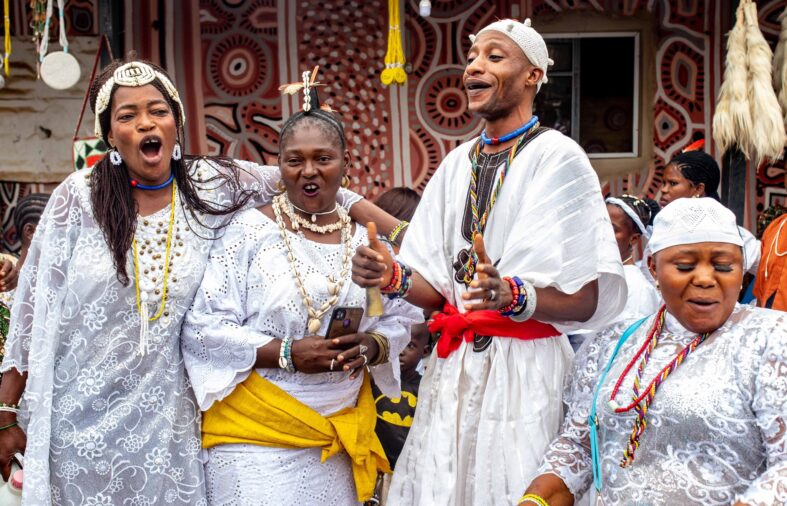The Osun Oshogbo festival is an annual event celebrated at the Osun sacred grove, located in Osun state, Nigeria. Osun state is in the western region of Nigeria, under the Southwest zone of the country. The festival holds in Oshogbo, the state capital. The sacred grove is one of the surviving groves scattered around Yorubaland centuries ago. The grove is regarded as the abode of Osun, the goddess of fertility. Apart from the annual worship of Osun performed at the grove, the grove is also used for daily and weekly religious practices.

The festival is celebrated by the Yoruba people, which is the predominant ethnic group in the Southwest. The Yorubas are believed to have originated from Ile-Ife, and they have several deities they worship called Orishas. The Osun deity is one of these Orishas, and the Osun Oshogbo festival is done to celebrate her. It is also a renewal of the mystical relationship between humans and the deity.

The festival scheduled for the eighth month of the year lasts for close to two weeks. The festival is so popular, that tourists of different races and ethnicity troops to Oshogbo to partake in the festival. The purpose of the festival is to worship the goddess of fertility and seek blessings. The priests offer fruits and sacrifices to the goddess to seek protection for the people from all forms of evil. The goddess known as Osun is also called the goddess of love, beauty, sensuality, and feminity.

The history of the Osun festival dates back more than 700 years. A group of settlers headed by the legendary hunter Olutimehin lived on the riverbank to escape a famine in their original home. Olutimehin was urged by the ‘goddess’ to relocate with his company to a higher location, he left where they initially settled, to a place which is now the site of Oshogbo town. It happened after a supposed encounter between Olutimehin and the goddess.
However, the history of the Osun festival is incomplete without the perusal of Susanne Wenger’s influence. Susanne is an Austrian artist who came to settle in the ancient town of Ibadan with her husband in the early 1950s. After some years, they moved to Osun, and Susanne’s love for the Yoruba culture blossomed. She met with some priests and assisted in reviving the sacred grove on the verge of ruin. She also oversaw the maintenance of the Grove. Activities such as fishing and felling were restricted to preserve the Grove. The Yoruba title ‘Iwinfunmi Adunni Olorisha,’ which means ‘the loved one who serves the divine,’ was later bestowed on Susanne. She passed away on January 12, 2009.


The Osun festival starts with cleansing the town. This ritual is called ‘Iwopopo.’ Then it is followed by the lighting of the 500-year-old lamp called ‘Ina Olojumerindinlogun,’ which translates to the ‘sixteen-point lamp.’ The lighting takes place three days after the cleansing. Following this is the Iboriade, a ceremony in which the current Ataoja of Osogbo, the Arugba, the Yeye Osun, and a panel of priestesses gather all the crowns of former monarchs or Ataojas for blessings.


The Arugba (Calabash carrier) is the center of attraction at the festival. She is a votary virgin who carries the Osun calabash on her head. The calabash contains offerings to be sacrificed in honor of the river goddess. When the young maiden is initiated as the Arugba, she transitions from being a mere virgin maid to a goddess. The crowd offers prayers to her and puts all their woes upon her, believing that her goodness will make things better, as she leads them to the river with the calabash balanced on her head.

During the festival, the attendees go to the river to ask the goddess for blessings. They drink water from the river for its perceived divination and take some with them to their homes to bathe with.

The Osun festival also includes a lot of cultural showcases apart from offerings and sacrifices. The attendees get entertained by art performers. Notable brands also grace the event to promote their brand to attendees.









